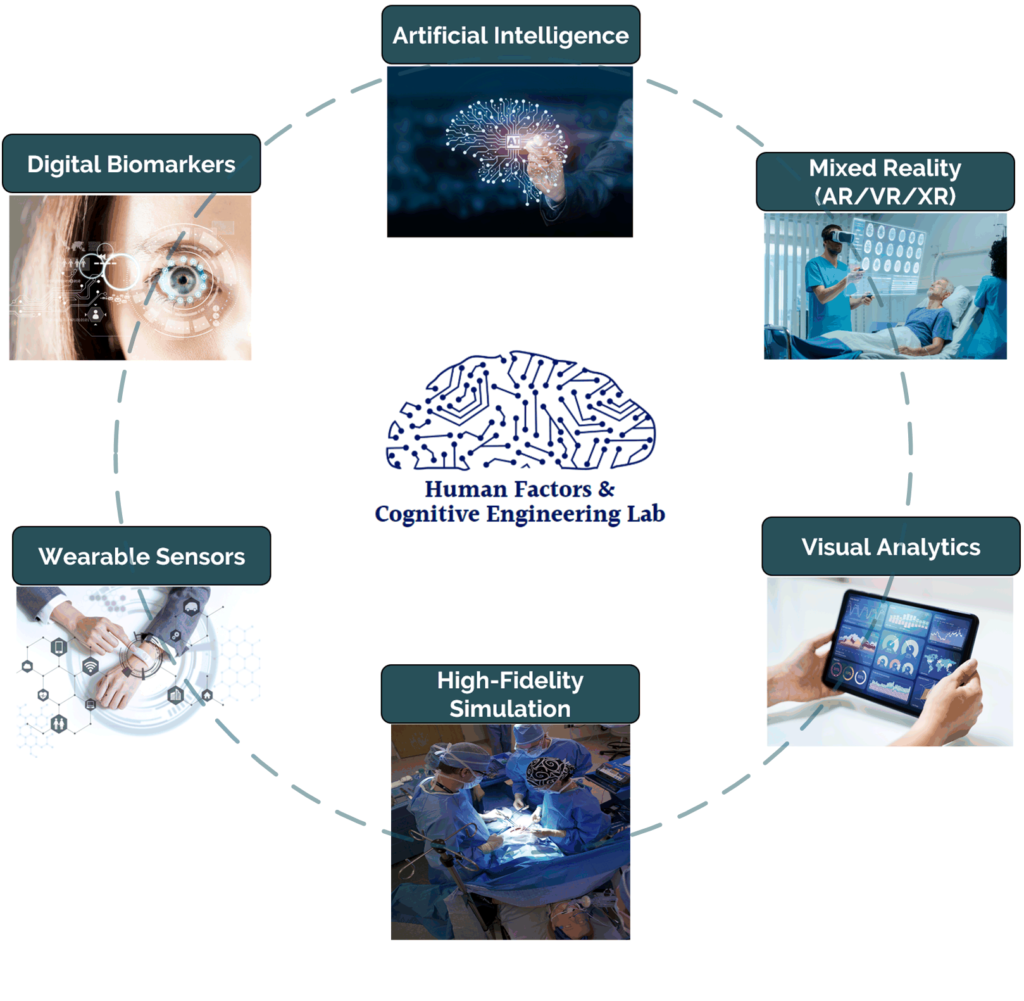
Digital biomarkers are defined as objective, quantifiable physiological and behavioral data captured through digital technologies. Our labs’ research uses digital biomarkers to assess clinicians’ cognitive and behavioral states as they relate to clinical performance, quality of care and patient safety in a variety of settings, such as emergency departments, critical care units, operating rooms, and space missions. The studies conducted in our lab involve all aspects of health professional performance, including both technical (e.g. dexterity, procedural skills, diagnosis and treatment planning) and non-technical skills (e.g. situational awareness, decision-making, teamwork, leadership, communication and stress management). Our research encompasses not only acute cognitive and behavioral states, but also long-term measures of clinician well-being, such as stress, fatigue, burnout and sleep quality.
Wearable Sensors include a variety of unobtrusive devices encompassing electrocardiography (ECG), electroencephalography (EEG), electrodermal activity (EDA), electromyography (EMG), photoplethysmography (PPG), accelerometer and gyroscope that are used in our studies by clinicians during simulated and real-life patient care. This data is processed using spectral analysis to decompose time series into periodic components. The parameters generated by these methods are used as proxies for several relevant constructs, such as stress (e.g. heart rate, jaw clench, skin conductance), fatigue (e.g. heart rate variability and EEG, EMG), cognitive load (e.g. heart rate variability), engagement (β, γ and θ brainwaves), attention (blink rate), physical activity (body acceleration) and sleep quality (EEG and accelerometer).
Artificial Intelligence and Machine learning techniques are used on video recordings captured by high-definition cameras. These videos are processed by a deep learning-enabled computer vision software that tracks the position of body, face and hand keypoints from multiple team members during patient care. This data is used to measure team dynamics (e.g. team proximity, team centrality, position density), human emotions (facial recognition) and motion patterns of clinicians performing a variety of clinical tasks, providing automated assessments of clinicians’ behaviors and performance.
Data Science and Visual Analytics work with vast volume, velocity and variety of data. It requires advanced computing procedures, such as database management (ETL – extract, transform and load), data processing and interactive data visualization. In our lab, we use several programming languages (e.g. Phyton and R) and cloud-based warehouses (e.g. Amazon AWS Redshift) to store, integrate and process digital biomarker data. Visual analytics software (e.g. Tableau and R Shiny) are used to develop web-based dashboards, facilitating the visualization and interpretation of our research findings through interactive and user-friendly interfaces.
Virtual, Augmented and Mixed Reality involve the blending of the physical and digital worlds, with these two realities defining the polar ends of a spectrum known as the mixed reality spectrum. In our lab, a MR platform has been developed for interactive and immersive medical education. Augmented clinical tools in the form of smart checklists are embed into this platform to provide real-time clinical guidance. Digital biomarkers are captured to measure learners’ engagement and cognitive workload during MR-based medical scenarios.
High-Fidelity Simulation is an education methodology that involves the use of sophisticated life-like manikins and/or standardized patients in highly realistic simulated clinical environments. We use high-fidelity simulation as a human factors laboratory to conduct feasibility and usability studies and to prototype novel technologies before testing in real settings. The simulation lab allows the standardization of research experiments and most of our projects involve the use of simulation as phase 1, before translation to the actual clinical environment.
